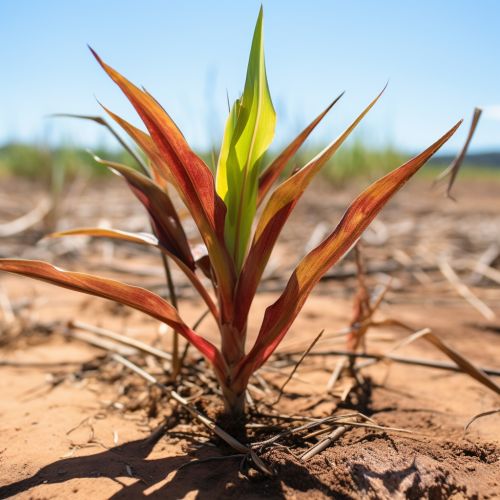Plant Stress Response
Introduction
Plants, like all living organisms, face a variety of environmental stresses that can affect their growth, development, and survival. These stresses can be abiotic, such as drought, temperature extremes, and nutrient deficiencies, or biotic, such as pests, diseases, and competition with other plants. The ability of plants to respond to these stresses is crucial for their survival and reproduction. This response is known as the plant stress response.
Abiotic Stress Response
Abiotic stress factors are non-living environmental factors that can have a detrimental effect on a plant's growth and development. These include factors such as temperature extremes, water availability, and nutrient availability.
Temperature Stress
Plants are ectothermic organisms, meaning their internal temperature is largely determined by the external environment. As such, they are highly sensitive to changes in temperature. Temperature stress can occur when temperatures are either too high (heat stress) or too low (cold stress).


Plants have evolved a range of responses to temperature stress. These include changes in membrane fluidity, production of heat shock proteins, and changes in gene expression. For example, under heat stress, plants may increase the production of heat shock proteins, which help to protect the plant's cells from damage.
Water Stress
Water stress in plants can occur due to either too much water (waterlogging or flooding) or too little water (drought). Both conditions can have a significant impact on a plant's ability to grow and survive.
In response to water stress, plants may undergo a number of physiological changes. These include changes in root growth, stomatal conductance, and photosynthetic rate. For example, under drought conditions, plants may increase root growth in order to access deeper water sources, and decrease stomatal conductance to reduce water loss.
Nutrient Stress
Plants require a range of nutrients for growth and development. Nutrient stress can occur when these nutrients are either deficient or in excess.
In response to nutrient stress, plants may alter their root growth and nutrient uptake. For example, under conditions of nitrogen deficiency, plants may increase root growth and enhance nitrogen uptake mechanisms.
Biotic Stress Response
Biotic stress factors are living organisms that can have a detrimental effect on a plant's growth and development. These include pests, diseases, and competition with other plants.
Pest and Disease Stress
Plants are subject to attack by a wide range of pests and diseases. These can include insects, fungi, bacteria, viruses, and nematodes.
In response to pest and disease stress, plants have evolved a range of defense mechanisms. These include physical barriers (such as thorns and tough leaves), chemical defenses (such as toxins and repellents), and induced defenses (such as the production of antimicrobial compounds in response to infection).
Competition Stress
Plants often have to compete with other plants for resources such as light, water, and nutrients. This competition can be a significant source of stress.
In response to competition stress, plants may alter their growth and development. For example, plants may increase their height in order to access more light, or increase root growth in order to access more water and nutrients.
Conclusion
The plant stress response is a complex process that involves a range of physiological and molecular changes. Understanding this response is crucial for improving plant productivity and survival under stressful conditions.
